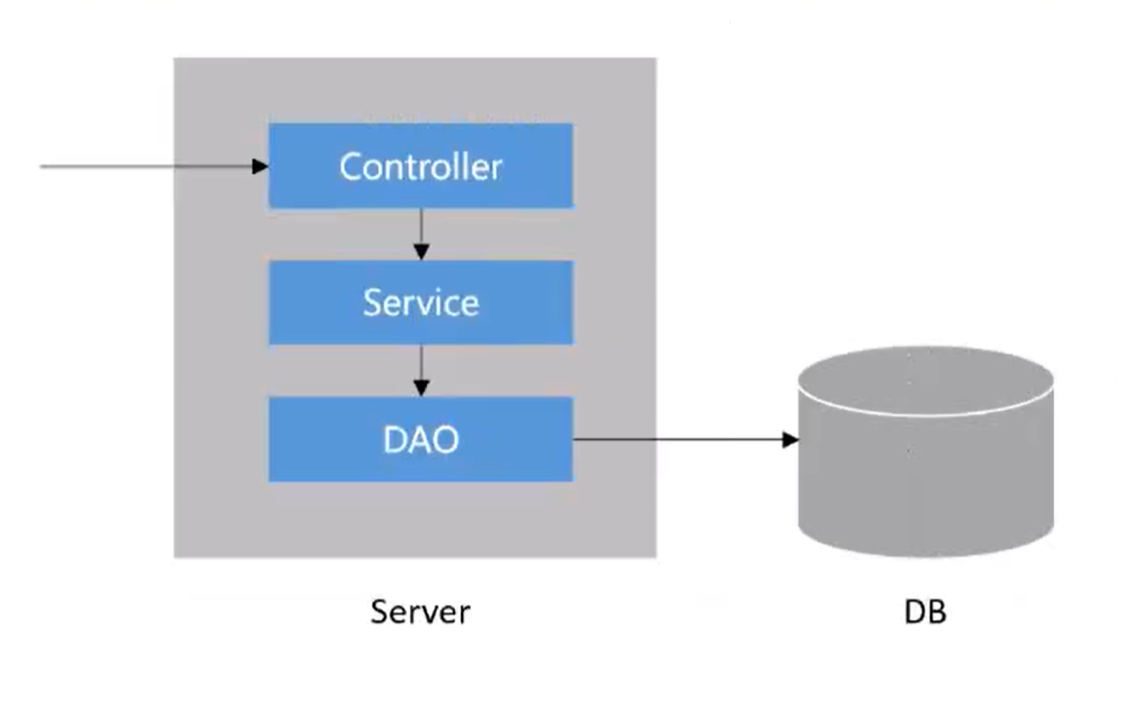9.7 KiB
9.7 KiB
开发社区首页
DiscussPost 讨论帖
Entity
DAO
- Mapper 接口
DiscussPostMapper - 对应的 xml 配置文件
discusspost-mapper.xml
@Param 注解用于给参数起别名,如果只有一个参数,并且需要在 <if> 里使用,则必须加别名
@Mapper
public interface DiscussPostMapper {
/**
* 分页查询讨论贴信息
*
* @param userId 当传入的 userId = 0 时查找所有用户的帖子
* 当传入的 userId != 0 时,查找该指定用户的帖子
* @param offset 每页的起始索引
* @param limit 每页显示多少条数据
* @return
*/
List<DiscussPost> selectDiscussPosts(int userId, int offset, int limit);
/**
* 查询讨论贴的个数
* @param userId 当传入的 userId = 0 时计算所有用户的帖子总数
* 当传入的 userId != 0 时计算该指定用户的帖子总数
* @return
*/
int selectDiscussPostRows(@Param("userId") int userId);
}
对应的 Mapper:
<?xml version="1.0" encoding="UTF-8"?>
<!DOCTYPE mapper
PUBLIC "-//mybatis.org//DTD Mapper 3.0//EN"
"http://mybatis.org/dtd/mybatis-3-mapper.dtd">
<mapper namespace="com.greate.community.dao.DiscussPostMapper">
<sql id = "selectFields">
id, user_id, title, content, type, status, create_time, comment_count, score
</sql>
<!--分页查询讨论贴信息-->
<!--不显示拉黑的帖子, 按照是否置顶和创建时间排序-->
<select id = "selectDiscussPosts" resultType="DiscussPost">
select <include refid="selectFields"></include>
from discuss_post
where status != 2
<if test = "userId!=0">
and user_id = #{userId}
</if>
order by type desc, create_time desc
limit #{offset}, #{limit}
</select>
<!--查询讨论贴的个数-->
<select id = "selectDiscussPostRows" resultType="int">
select count(id)
from discuss_post
where status != 2
<if test = "userId != 0">
and user_id = #{userId}
</if>
</select>
</mapper>
Service
关于自动注入 Mapper 报错问题:可参考 关于IDEA中@Autowired 注解报错~图文
@Service
public class DiscussPostSerivce {
@Autowired
private DiscussPostMapper discussPostMapper;
/**
* 分页查询讨论帖信息
*
* @param userId 当传入的 userId = 0 时查找所有用户的帖子
* 当传入的 userId != 0 时,查找该指定用户的帖子
* @param offset 每页的起始索引
* @param limit 每页显示多少条数据
* @return
*/
public List<DiscussPost> findDiscussPosts (int userId, int offset, int limit) {
return discussPostMapper.selectDiscussPosts(userId, offset, limit);
}
/**
* 查询讨论贴的个数
* @param userId 当传入的 userId = 0 时计算所有用户的帖子总数
* 当传入的 userId != 0 时计算该指定用户的帖子总数
* @return
*/
public int findDiscussPostRows (int userId) {
return discussPostMapper.selectDiscussPostRows(userId);
}
}
User
Entity
DAO
@Mapper
public interface UserMapper {
/**
* 根据 id 查询用户
* @param id
* @return
*/
User selectById (int id);
/**
* 根据 username 查询用户
* @param username
* @return
*/
User selectByName(String username);
/**
* 根据 email 查询用户
* @param email
* @return
*/
User selectByEmail(String email);
/**
* 插入用户(注册)
* @param user
* @return
*/
int insertUser(User user);
/**
* 修改用户状态
* @param id
* @param status 0:未激活,1:已激活
* @return
*/
int updateStatus(int id, int status);
/**
* 修改头像
* @param id
* @param headerUrl
* @return
*/
int updateHeader(int id, String headerUrl);
/**
* 修改密码
* @param id
* @param password
* @return
*/
int updatePassword(int id, String password);
}
对应的 mapper.xml:
<?xml version="1.0" encoding="UTF-8"?>
<!DOCTYPE mapper
PUBLIC "-//mybatis.org//DTD Mapper 3.0//EN"
"http://mybatis.org/dtd/mybatis-3-mapper.dtd">
<mapper namespace="com.greate.community.dao.UserMapper">
<sql id = "insertFields">
username, password, salt, email, type, status, activation_code, header_url, create_time
</sql>
<sql id = "selectFields">
id, username, password, salt, email, type, status, activation_code, header_url, create_time
</sql>
<!--根据 Id 查询用户信息-->
<select id = "selectById" resultType = "User">
select <include refid="selectFields"></include>
from user
where id = #{id}
</select>
<!--根据 Username 查询用户信息-->
<select id="selectByName" resultType="User">
select <include refid="selectFields"></include>
from user
where username = #{username}
</select>
<!--根据 email 查询用户信息-->
<select id="selectByEmail" resultType="User">
select <include refid="selectFields"></include>
from user
where email = #{email}
</select>
<!--插入用户信息(注册)-->
<insert id="insertUser" parameterType="User" keyProperty="id">
insert into user (<include refid="insertFields"></include>)
values(#{username}, #{password}, #{salt}, #{email}, #{type}, #{status}, #{activationCode}, #{headerUrl}, #{createTime})
</insert>
<!--修改用户状态-->
<update id="updateStatus">
update user set status = #{status} where id = #{id}
</update>
<!--修改用户头像-->
<update id="updateHeader">
update user set header_url = #{headerUrl} where id = #{id}
</update>
<!--修改密码-->
<update id="updatePassword">
update user set password = #{password} where id = #{id}
</update>
</mapper>
Service
@Service
public class UserService {
@Autowired
private UserMapper userMapper;
public User findUserById (int id) {
return userMapper.selectById(id);
}
}
Page 分页
/**
* 封装分页相关的信息
*/
public class Page {
// 当前的页码
private int current = 1;
// 单页显示的帖子数量上限
private int limit = 10;
// 帖子总数(用于计算总页数)
private int rows;
// 查询路径(用于复用分页链接, 因为我们不只在首页中有分页,其他界面也会有分页)
private String path;
public int getCurrent() {
return current;
}
public void setCurrent(int current) {
if (current >= 1) {
this.current = current;
}
}
public int getLimit() {
return limit;
}
public void setLimit(int limit) {
if (current >= 1 && limit <= 100) {
this.limit = limit;
}
}
public int getRows() {
return rows;
}
public void setRows(int rows) {
if (rows >= 0) {
this.rows = rows;
}
}
public String getPath() {
return path;
}
public void setPath(String path) {
this.path = path;
}
/**
* 获取当前页的起始索引 offset
* @return
*/
public int getOffset() {
return current * limit - limit;
}
/**
* 获取总页数
* @return
*/
public int getTotal() {
if (rows % limit == 0) {
return rows / limit;
}
else {
return rows / limit + 1;
}
}
/**
* 获取分页栏起始页码
* 分页栏显示当前页码及其前后两页
* @return
*/
public int getFrom() {
int from = current - 2;
return from < 1 ? 1 : from;
}
/**
* 获取分页栏结束页码
* @return
*/
public int getTo() {
int to = current + 2;
int total = getTotal();
return to > total ? total : to;
}
}
Controller
@Controller
public class HomeController {
@Autowired
private DiscussPostSerivce discussPostSerivce;
@Autowired
private UserService userService;
@GetMapping("/index")
public String getIndexPage(Model model, Page page) {
// 获取总页数
page.setRows(discussPostSerivce.findDiscussPostRows(0));
page.setPath("/index");
// 分页查询
List<DiscussPost> list = discussPostSerivce.findDiscussPosts(0, page.getOffset(), page.getLimit());
// 封装帖子和该帖子对应的用户信息
List<Map<String, Object>> discussPosts = new ArrayList<>();
if (list != null) {
for (DiscussPost post : list) {
Map<String, Object> map = new HashMap<>();
map.put("post", post);
User user = userService.findUserById(post.getUserId());
map.put("user", user);
discussPosts.add(map);
}
}
model.addAttribute("discussPosts", discussPosts);
return "index";
}
}
🚩 小 Tip:这里不用把 Page 放入 model(model.addAttribute("page", page);
因为在方法调用之前,Spring MVC 会自动实例化 Model 和 Page,并将 Page 注入 Model,所以,在 Thymeleaf 中可以直接访问 Page 对象中的数据
前端界面 index.html
th:each="map:${discussPosts}"
表示将每次遍历 discussPosts 取出的变量称为 map
